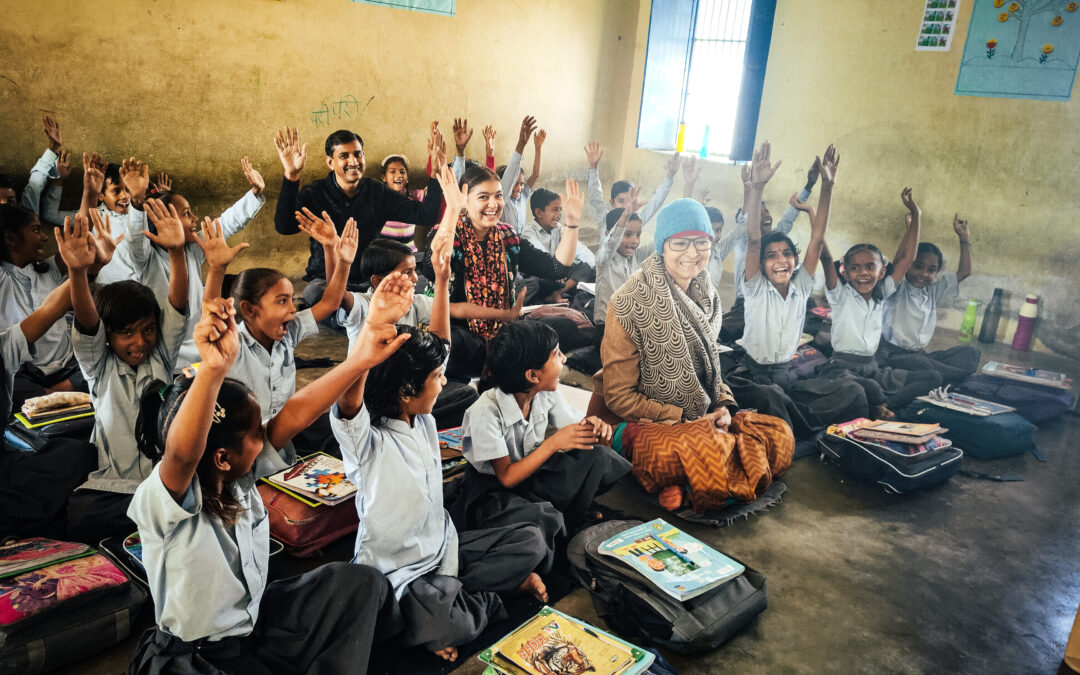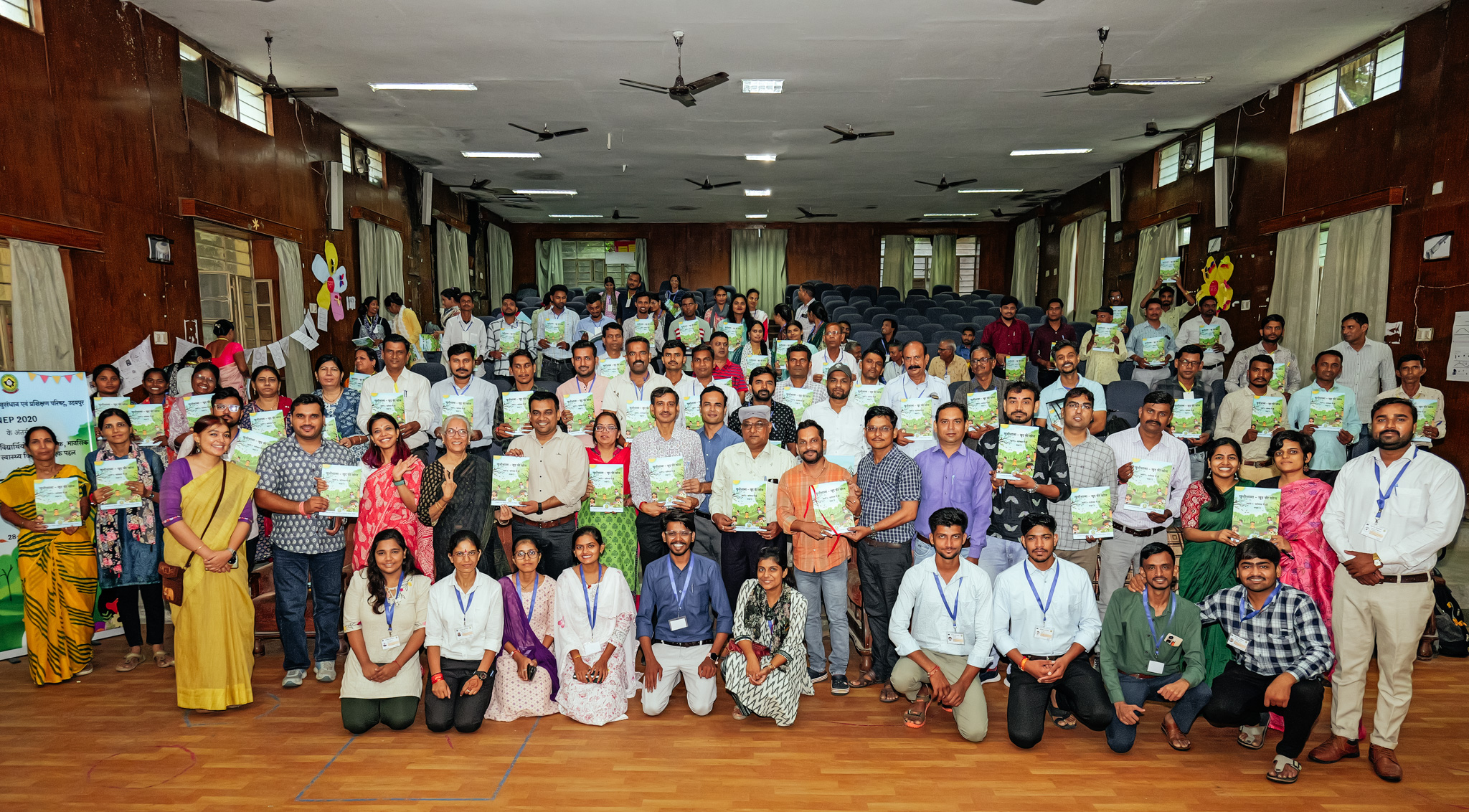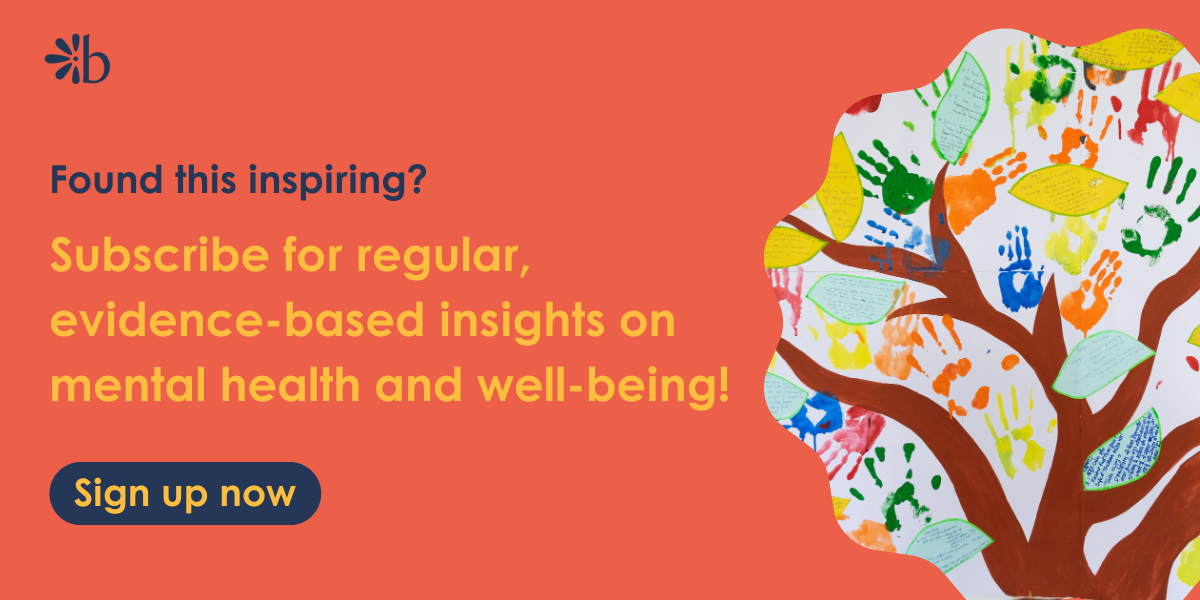One of the “holy grails” of the social innovation journey is achieving public sector adoption or integration. Across numerous accelerators, books, and programs focused on social entrepreneurship, getting the government to “scale up your solution” is the ultimate goal that many founders are encouraged to consider.
And, while this punchline narrative isn’t particularly useful (more on that later), the orientation is understandable. The public sector, when functioning well, offers services to some of the most marginalized populations in society. It is supported in perpetuity by taxes. And, in healthy democracies, it is held accountable by citizens to deliver.
But… isn’t government imperfect at best?
Despite the strong encouragement to hand off programs to the government and exit, NGO teams, leaders, and funders have many reasons to resist this shift. Whether you buy into a “doer-and-payer-at-scale” mentality, or something that feels more collaborative than transactional, the idea of someone else executing your program— someone who probably has a full plate of responsibilities already and little expertise in your intervention— can be a turnoff.
Not to mention that the process of actually achieving meaningful adoption and quality execution can be a huge challenge. Integrating a program into the public sector requires having a cleareyed understanding of that sector. How well is it functioning to begin with? What are the structural and systemic problems that exist within it? Can we tolerate and operate with these specific ongoing challenges, or would the tradeoff be too immense?
Why and how we’re working with the government-school system with our local partners
Since 2020, our collaboration with Kshamtalaya Foundation has focused on their work integrating mental health and wellbeing into classrooms to make public education more compassionate and effective. Our first co-creation, Hausla, was designed to support government-school teachers during the Covid-19 pandemic.
Hausla became a huge success, in that teachers loved it, the evidence of meaningfully improving wellbeing was strong, and it lasted beyond the peak Covid years. The education officials of Rajasthan, the state where we first designed and deployed Hausla, also took notice. The members of Rajasthan State Council for Education Research and Training (RSCERT)— the bureaucratic body that designs teacher training and state curriculum— went through Hausla themselves. They had heard directly from teachers how meaningful the program was to them, and how motivating it was in the midst of an extraordinarily difficult time.
RSCERT then began to recognize Kshamtalaya as a local, grounded wellbeing expert that could help them do more. In 2022, we started the co-creation process of Khushi Shala, a mental health curriculum and teacher guidebook for primary grades 1-5. RSCERT invited us to create the framework and content, and brought together teachers and officials to work on the drafts together.
In 2024, RSCERT brought together 120 teachers from 60 schools in 2 different districts in Rajasthan to be trained on Khushi Shala by our team. There, the officials of RSCERT shared their belief in the importance of improving children’s social and emotional skills as a method of addressing mental health and overall wellbeing. In other words, they publicly endorsed the endeavor.
With pilot success and extremely positive teacher feedback, the state of Rajasthan has now decided to adopt Khushi Shala across all 74,000 schools. At full implementation, 120,000 primary school teachers instruct 3.3 million children per year. From local officials to the Education Secretary, individuals across the education bureaucracy have become champions for this program in 2025. Members of the government are bought in, which has helped us advance this collaboration by leaps and bounds.
“We’re scaling!” — what meaningful government collaboration requires of us
This year, Brio and Kshamtalaya have experienced more change than we have in our past 5 years of close partnership. Working with members of the government more closely than ever— and aligning philanthropic support for the momentum we’re seeing— has required us to evolve.
The change in how organizations must work in order to partner effectively in government is well-documented. A recent article by Rakesh Rajani and Tim Hanstad, both seasoned leaders in the field of government collaboration, recognizes that the way many nonprofit and philanthropic organizations operate is not the way government operates.
We also explored this in 2024, when we started researching and writing specifically about what social innovators across the world have done to improve mental health through the public sector. This report, with case studies from 6 countries, was launched at Davos 2025 together with Catalyst Now. You can download it here.
As we’ve spoken with numerous NGO leaders in the Global South, both in mental health and beyond, who are prioritizing working with the government, we’ve learned that there’s a wide range of what “partnering with government” actually means. Sometimes it’s simply getting permission to operate in public sector settings (e.g. schools and hospitals), where an NGO team is allowed to be there providing additional services. Other times it’s joining meetings and focus groups to advise the government on policies, frameworks, or best practices.
But if we’re talking about a full program or service integration, where eventually a public sector workforce is executing on an idea or intervention that you developed, that requires the highest level of government buy-in. This model requires the highest cost input from the government itself: training, staff time, infrastructure, monitoring, and maintenance, to begin with.
The truth is that many government entities would prefer to simply have an agreement with an NGO, and allow that NGO to fund and carry out the activities. And sometimes that’s a good path forward, but the NGO is required to sustain those activities on its own, and it’s not really integrated into the public sector as standard practice.
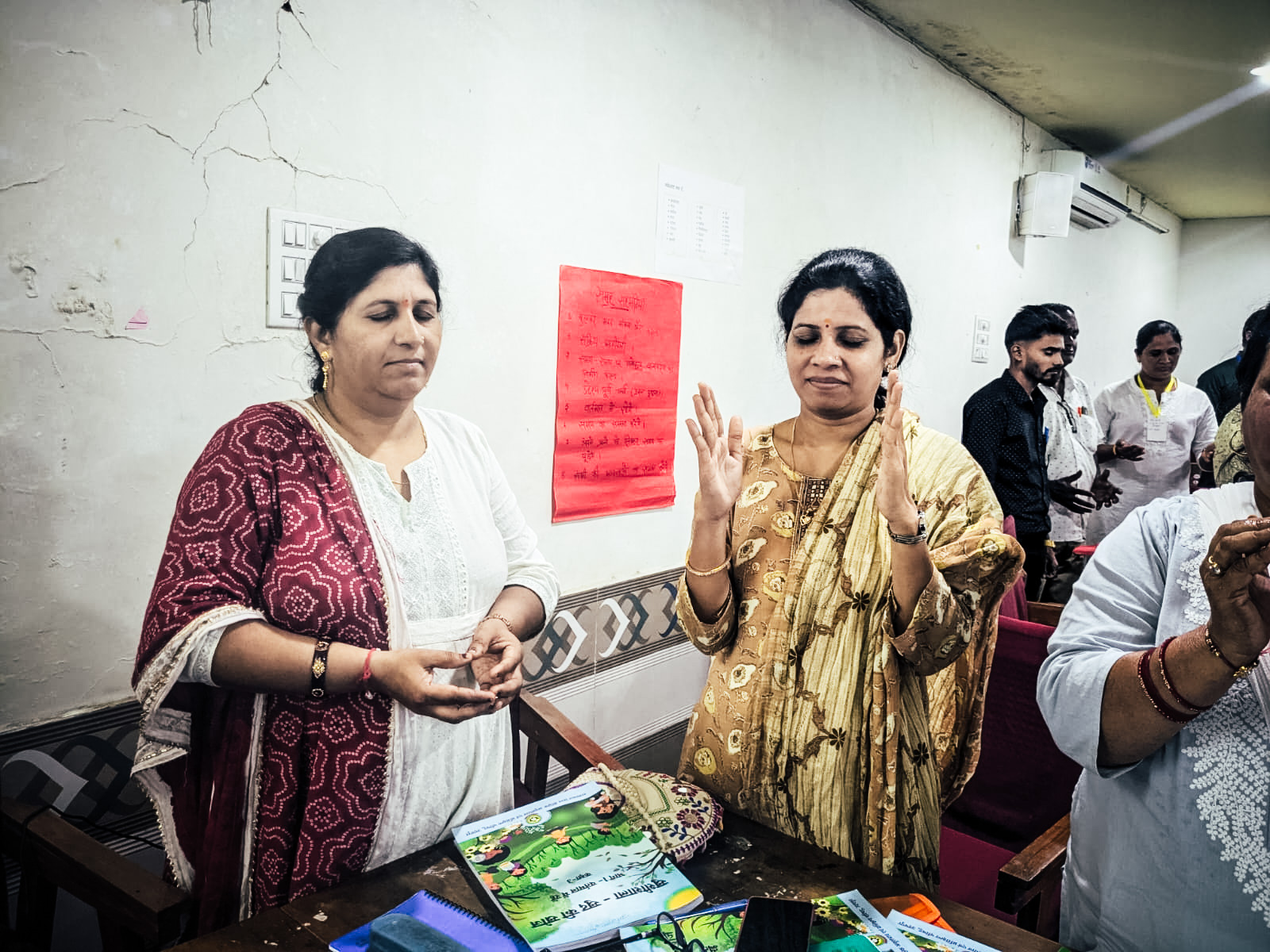
Government-led adoption: there’s no roadmap, but essential practices and pivots.
In some ways, we’ve been building toward this moment since 2020. During that time, we’ve learned so much from and with our partner team at Kshamtalaya about what moves the needle in government collaboration. There are key practices and tools that contributed to building a meaningful partnership with strong outcomes, a vision for scale, and internal government champions.
None of these are secrets of the trade— and so many factors remain outside any individual team’s control. But, if working with the government is important to you, these are some of the basics that we’ve found essential.
1) Acknowledge and allow a reorientation of how you operate.
Designing, piloting, measuring, refining, planning, training, monitoring, reiterating. Much ink has been spilled on theories of change, strategic plans, and logic models. These are commonly used processes in how organizations make change through programs and services. It’s also how we’re frequently funded: grants that are timebound and restricted to delivery of certain pre-determined activities with pre-determined expected outcomes.
Despite its proliferation in the social sector, this is not the most useful orientation for working with the government, especially large bureaucratic entities. Everything from their timelines and priorities to their planning and training approach can be completely different from yours. If you’re prioritizing a government entity as your partner and implementer, you’ll inevitably find yourself on their timeline. You’re not in charge of them. Adapting, nudging, and supporting their internal processes will be critical to collaboration.
Another reorientation besides operations is purpose and impact. Improving mental health in a particular way as outlined by our mission and theory of change is what most organizations are sharpening all the time. But the public sector has its own goals and agendas, and it’s unlikely they’ll adopt yours directly. Finding the intersection and making the most of it— showing them that working with you advances their goals— is the way to stay in the game.
2) Co-vision and co-create as early as possible.
Some people call it “nail-it-and-scale-it”: a common approach in global development combined with academia to create something really effective (nail it) and then look for implementers (scale it). From the public sector’s perspective, this is not always an attractive approach. Government leaders we’ve worked with want co-creation, credit, and ownership. As Rajani and Hanstad write, “Nobody likes to be told to line up behind someone else’s idea.”
Of course, you have to get in the door, and showing up completely empty-handed probably won’t work. In our case, we showed the effectiveness of Hausla, and it gave our partners credibility as wellbeing experts as well as a team that had on-ground, relational experience with teachers working at the last mile.
Building the vision and design for Khushi Shala, then was by invitation of RSCERT. While our team did a lot of heavy lifting, RSCERT’s team and officials invested their time and resources as well, and they now own the curriculum. It’s not something an NGO (local or foreign) designed that they’re just adopting. They’re proud of it! They’re telling other states about it! It’s unique to them. That makes a difference in motivation, especially as governments can and need to take credit for what they’ve accomplished.
3) Cultivate shared values and culture, and support your champions.
This is definitely more art than science— because people are motivated not by logic alone. Our partners at Kshamtalaya did an extraordinary job building relationships at RSCERT over multiple years. They showed up to meetings with an attentive and humble posture. They demonstrated inclusion and compassion when they advised and made requests of officials. Whenever we interacted with government leaders, we acknowledged and appreciated their efforts from an authentic place, and listened deeply to their concerns and goals.
Ultimately, there’s no better way to say that the quality and depth of relationships you cultivate determines your outcomes, more than many of us would probably like to admit. Becoming masters of relationship-building is essential. If the government counterpart enjoys the partnership, they’ll invest more. Especially those at the mid-levels and on-the-ground.
Furthermore, government leaders are often underappreciated for their efforts. Demands fly in from everywhere, including from NGOs seeking to partner with them. When crises occur, they’re pulled away from their tasks, and they may face angry constituents who hold them responsible for problems outside their purview.
As Dan Honig acknowledges in Mission Driven Bureaucrats, this job is extraordinarily difficult at times, but many government leaders believe in their sector’s ability to really make a difference, and they’re looking for ways to do so. Encouraging those who champion the work that we do with them has been both personally and professionally meaningful; it cannot be underestimated.
And it has tangible outcomes. Recently, several leaders at RSCERT, including the director of the entire entity, went public (in Hindi) about how important mental health was, and what it means to them to be making Rajasthan a champion.
“So in this blind race for success, we need to learn how to balance it with mental well-being and joy. And that’s what the Khushi Shala Project promotes, From the very beginning, it teaches us to move ahead in life, set goals, and strive to achieve them, but also maintain a balance. Not at the cost of our happiness or emotional health. Only when we move forward with sympathy and empathy, can we truly be called successful. The success of the pilot study in Banswara and Sirohi, the joy on children’s faces, the feedback from teachers and parents; all this has helped us decide that we will implement this program across the state.” – Shweta ma’am, Director, RSCERT
4) Identify your non-negotiables and your definition of “worthwhile”.
So far, these practices may seem oriented toward centering the government and making yourself a good partner. That’s important– but a constant conversation within our team is what matters most to us. Scale alone is not good enough: you can scale mediocrity, and none of us are here for that ego boost. What makes all this worthwhile?
This is where identifying non-negotiables come in. There’s no world in which any collaborator will have full visibility into a public sector’s operations, especially at a state or national level. And as programs are rolled out across thousands of institutions, perhaps reaching millions of people, it becomes less feasible to see what every moment of service delivery looks like. Even with thoughtful monitoring and feedback systems, assisted by technology, there’s a tradeoff you’ll have to contend with.
So what matters to you and your team? Giving up control over the entire process does not mean giving up all agency to influence and shape it. Perhaps quality training is critical to outcomes, and this will be a non-negotiable. Perhaps ongoing support for implementors needs to be stronger than what’s currently in place– so you’ll have to figure out how to work that in. And, perhaps it’s important to remain an agile advisor and thought partner to the government even after they’ve fully integrated the program or service; so you’re not going to exit completely.
For Brio and Kshamtalaya, we insist on continuing to center children and educators. There are many other stakeholders: government leaders at every level (who, arguably are not the same stakeholder), funders (again, of various kinds and who care about various data points), and other partners. Adults tend to have a louder voice than children, and leaders with more power tend to carry more weight. So to center children and teachers in last-mile schools, we must insist on their perspectives, engaging with them, and ultimately seeing whether they are benefiting. They cannot carry the existential weight of our ambitions. If they’re not flourishing, if we start catering solely to people in power, then we’d better stop what we’re doing and fast.
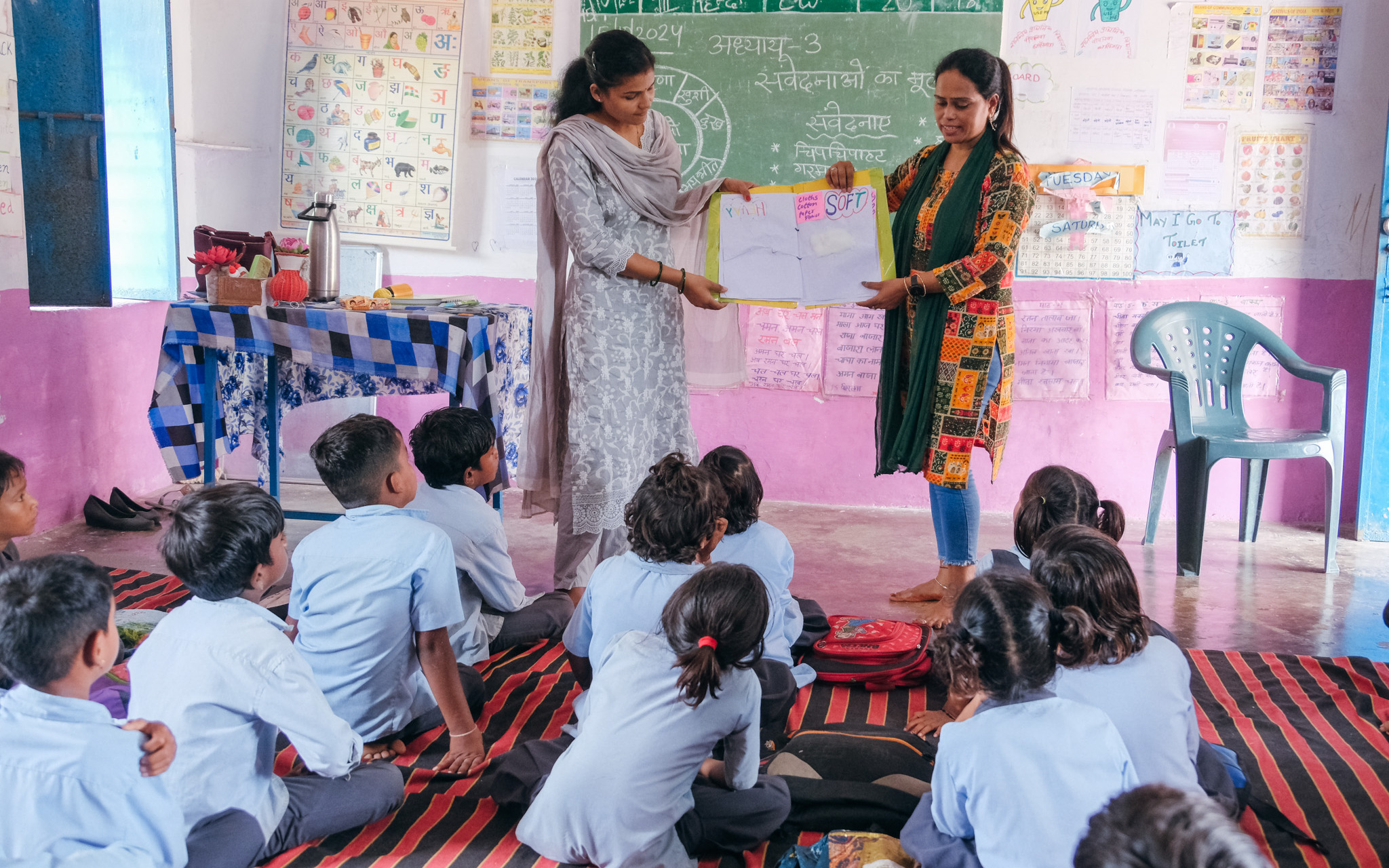
Learn and evolve your way forward— with flexibility and curiosity.
If there’s anything we’ve learned from several years of collaborating with the state of Rajasthan, it’s that there’s very few people who can really tell you “how to do this”. We’ve spoken to some of the top thinkers in the field, and they’ve offered advice that we cherish. And the reality is, every context is different: every government, every sector, every moment in history. As 2025 unfolds, we’ve yet to see where much of the development and social innovation sectors move.
So the best practice for staying in the game— if that’s indeed what you determine is worthwhile for you— is to be open to change. Again, psychological flexibility, the mental processes that underpin Brio’s work, is important not just for us as individuals but for teams too. Working in dynamic spaces, we can’t be rigid.
And perhaps you’ll find it’s worthwhile to be a part of this unfolding story. Because when governments can serve their citizens more effectively, nonprofits can innovate further, people experience more healing and agency, and the positive cycle continues. In a world where there are no guarantees, this is indeed a big bet: one that’s worth making.
—
Further resources
- Accelerating India’s Development: A State-Led Roadmap for Effective Governance by Karthik Muralidharan
- Building State Capability Evidence, Analysis, Action by Matt Andrews, Lant Pritchett, and Michael Woolcock
- Mission Driven Bureaucrats Empowering People To Help Government Do Better, by Dan Honig
- “Helping NGOs and Funders Make the ‘Big Shift’ to Working With Government” by Rakesh Rajani and Tim Hanstad
Brio’s learning, publishing, and speaking
- Scaling Mental Health Access: Case Studies and Practices for Public Sector Integration (Catalyst Now, presented at Davos 2025)
- Partnering with Government – Impact and Innovation Podcast (Yale Insights)
- A New Blueprint for Public-Private Mental Health Collaboration (Mind the Gap)

